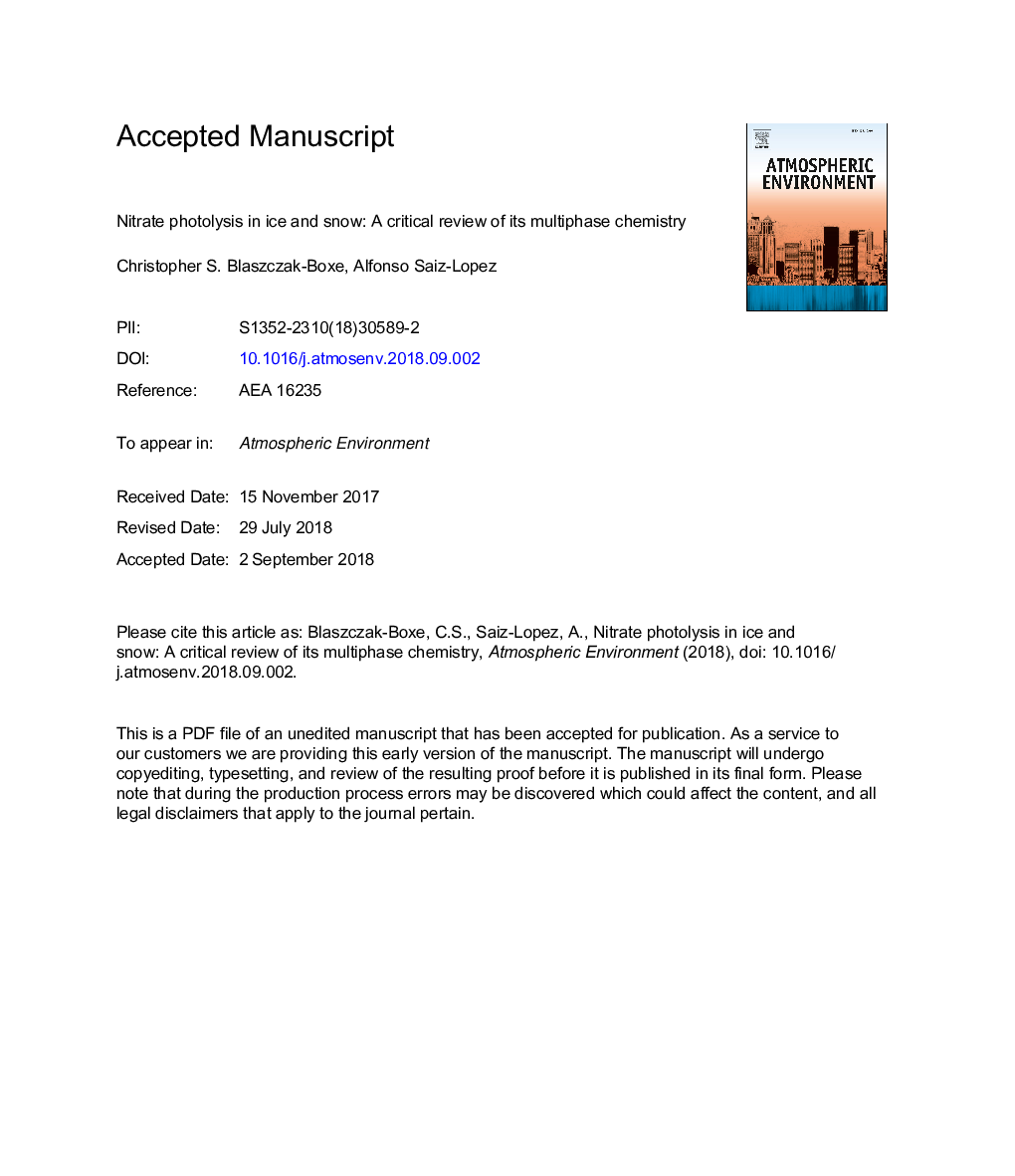| Article ID | Journal | Published Year | Pages | File Type |
|---|---|---|---|---|
| 10149626 | Atmospheric Environment | 2018 | 80 Pages |
Abstract
The polar cryosphere is an active medium for the movement of traces gases, such as nitrate, between the snowpack/sea-ice and overlying atmosphere. Field, laboratory, and modeling efforts have quantitatively shown that the exchange of trace species between the snowpack and the air above is governed by photochemistry in combination with air moving gases between these two matrices. Polar tropospheric chemistry and dynamics immensely impact processes governing chemical composition, isotopic signatures, oxidizing capacity, and thus regional climate. This study presents a comprehensive review of laboratory and modeling efforts - contextualized by field measurements - that have elucidated physicochemical processes governing nitrate photochemistry and its impact on the polar snowpack. Specifically, after an Introduction to nitrate photochemistry in ice, we discuss the: 1) initial Arctic field measurements that sparked interest in ice photolysis in the polar regions; 2) suite of follow-up field studies that catalyzed laboratory and snow-chamber investigations that gave deeper understanding of the effects of snow/ice - air trace gas exchange due to nitrate photochemistry; 3) complementary laboratory, snow-chamber investigations; and 4) a detailed review of recent nitrate ice photolysis laboratory experiments and the potential impact of utilizing laboratory and computational models to study the role of nitrate in the nitrogen cycle.
Related Topics
Physical Sciences and Engineering
Earth and Planetary Sciences
Atmospheric Science
Authors
Christopher S. Blaszczak-Boxe, Alfonso Saiz-Lopez,
